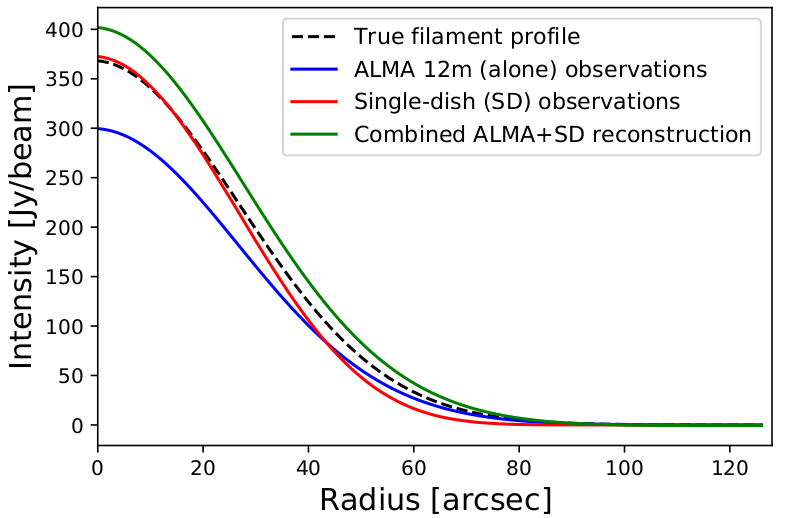| EPoS Contribution |
|
Interferometric observations of the ISM: the need for data combination
Francesca Bonanomi University of Vienna, Vienna, AT | |
| High-mass stars form at the intersection of complex filamentary networks. Investigating the key properties of filaments (i.e. column density and radial distribution) is mandatory to understand high-mass stars formation process. The study of filamentary networks across the Galaxy can only be performed using ALMA’s high-resolution images. The analysis of interferometric data is not straightforward, as the emission properties of the observed sources include large regions with diffuse, extended emission strongly affected by the intrinsic filtering effects of their true sky brightness distribution. We aim to quantify the impact of extended emission on the recovery of the fundamental filamentary structure at different spatial scales in the ISM, by adding the interferometric response to simulated data and comparing them with observations. Our results illustrate the intrinsic limitations of interferometers for the recovery of sources with extended emission, both being less sensitive to the column density distribution and critically affecting the radius and the slope of the true radial profile of the source. Our analysis proves how data combination between arrays and with single-dish can reproduce the real filamentary structure allowing us to recover the true key properties of filaments and to study the process of star formation.. This work has fundamental implications for present (ALMA) and future interferometric facilities, showing the limitations of interferometry and proving data combination as the leading technique in this field. | |
 | |
| Caption: Comparison between a true filament profile and the ones recovered by ALMA 12m (alone), a Single-dish (alone) and by a combined ALMA+Single-dish reconstruction. | |
| Collaborators: A. Hacar, U Vienna, AT S. Suri, U Vienna, AT A. Socci, U Vienna, AT |
Suggested Session:
Filaments |

